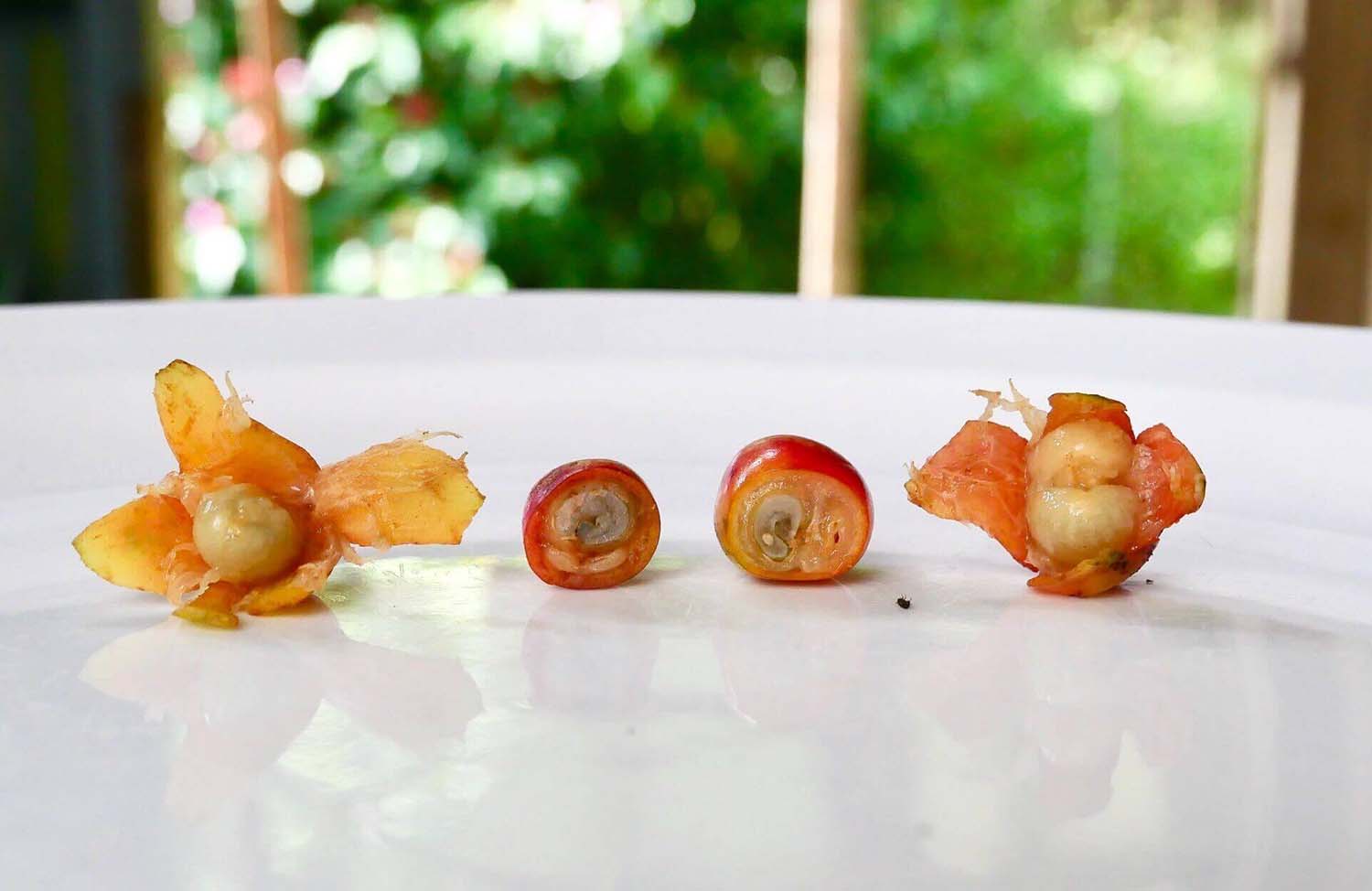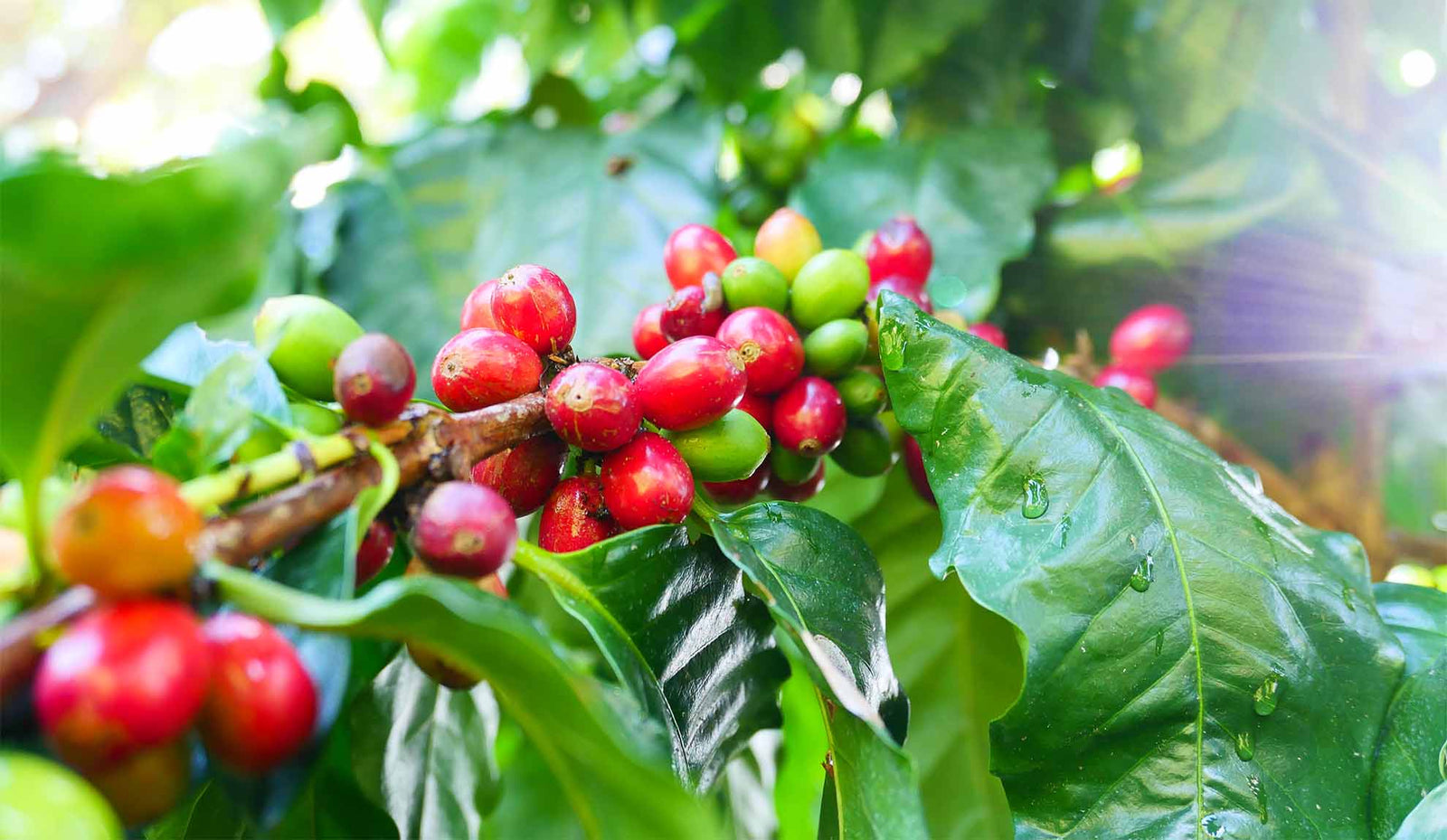Last month members of our Wild Coffee Lovers Club received something we were quite excited about: naturally processed Puna coffee! In some countries the natural process is common - usually those with water shortages - but in our wet climate it's risky, laborious & challenging. If the weather is cool or the cherry takes too long to dry, the fruit sugars might ferment and sour the coffee; yet if it's dried too quickly, the brewed coffee may taste woody or stale quickly.
Over the years we've attempted this process many times and composted many inferior lots in that process. The tiny surviving lots are shared between Brandon, myself, & whatever coffee students we have around at the time. Of course some are stored & carefully aged - usually only a few pounds. Last year, however, the stars aligned, the sun came out, dried up all the rain, and one third of our cherry survived the long drying phase. Just enough to share. Naturally, we sent that small tasting to our coffee club members.
The feedback has been great: more than encouraging to continue the risky endeavor! We hope to produce more this year, and ideally enough to offer on this website. ( If not, our coffee club members can expect to receive a similar allotment approximately this time next year.)
For those of you who'd like to learn more about the process, here it is. The following letter was sent to our members for the purpose of envisioning the pathway from cherry to roasted bean. Enjoy!
.....
Aloha Wild Coffee Lovers
This month, we’re giving you a hearty introduction to natural coffees (a.k.a. dried-in-the-fruit or dry process). You’ll find two vintages in your package this month: 2012 (20-month cure) & 2013 (8-month cure). I do need to apologize in advance for disregarding your roast preferences. This month, we’ve roasted to best suit the coffees.
With natural processed coffees, the coffee cherry is harvested and then dried fully intact as a whole fruit. What results is quite expected: a deeply fruited, often exotic, coffee that is generally sweeter and fuller in body than its counterparts. We liken it to the brandy of coffee.
Well-done naturals demand long term care and attention to detail. In fact, nearly every bean in your package was hand touched and inspected several times before roasting.
To give you a scope of the process, it takes roughly 2–4 weeks of sun drying and raking multiple times each day to reach the appropriate moisture level. The coffee needs to be hand-sorted regularly to ensure the cherries remains clean and free from hitchhikers adhering to the sugary surface. While the cherry is drying, the soft and open cellular surface of the bean begins absorbing the sugars and aromas imparted by the dried fruit. If we’re lucky, within a few weeks of dry weather the coffee will be ready for the storage (curing) process. But if the weather becomes too cool or rainy, there’s simply no way to pull it off; the coffee may dry so slowly that it begins to sour. (In fact, of our six attempts to produce naturals last year, only two were successful. The other four were composted.) The coffee cures in its fruited skins for many months before we mill the dried fruit away from the bean, then, again, hand-sort and inspect the coffee. Finally, eight long months later, the flavors have deepened and the coffee is ready to roast. We’re only able to produce such a small amount that we reserve it exclusively for you (and us, of course). Our 8-month natural was roasted to a medium light to show off its brilliantly sweet, cherry-like flavors.
In the natural from 2012, we let the cherry sit in the skins for 20 months before milling it just prior to roasting. Here, the flavors have deepened to grape with a hint of vanilla and wood. We’ve roasted this vintage to a darker medium to compliment the deeper flavors.
You can see why consistent, exquisite naturals are often highly revered. With any luck, we’ll be able to produce more beautiful naturals this coming harvest.
Cheers!
Kelleigh & Brandon




